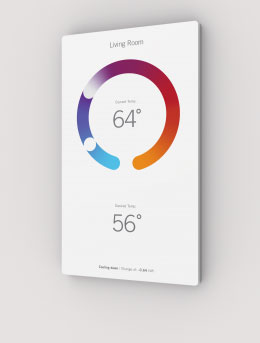How We Can Gain Public Trust of IoT (Internet of Things)
Digitization and rapid developments in digital technology has made it possible to collect data on almost anything; this includes biological, physical, mechanical, structural and atmospheric. It also made it easier for us to quantify and connect all of these items so that they communicate, to us or among themselves. This is where IoT (Internet of Things) comes in, its concepts has raised hope and fears about its possibilities. A major fear is; can we trust the technology to protect our privacy?
 When the internet was being developed security as we see it now was not a priority, just the possibility of getting everyone connected was the goal. We have accomplished that, the ability to communicate is expected with any mobile device. Because, security was an afterthought we have had to spend time going back and securing the information and the systems that the openness of the internet provide.
When the internet was being developed security as we see it now was not a priority, just the possibility of getting everyone connected was the goal. We have accomplished that, the ability to communicate is expected with any mobile device. Because, security was an afterthought we have had to spend time going back and securing the information and the systems that the openness of the internet provide.
To Start We Need Security
IoT is the next phase in the evolution of the internet, rather than connecting PCs and Servers we want to connect everything to it. Digital technology has enabled the creation and adoption of a wide range of innovative products with the ability to connect to the internet. Products such as the smartphone, laptop, tablet, and HD TV, others such as network routers we know and can accept will need access to the internet.
With IoT we want to connect more devices to the internet; devices we never thought would give any benefit by connecting to the internet because they are dumb. However, by making these devices smart could reveal a lot about people’s personal lives, which many are afraid to let others know about. It is here I think we have to opportunity to do it right the first time, trying to bolt on security on a solution after it is developed is of limited benefit, because the underlying design is inherently insecure.
We have already upgraded the IP (Internet Protocol) addressing to version 6, making it possible to give an ipaddress to an almost infinite amount of devices. I think similar to how we need more IPaddresses to make IoT possible we need to have security to make it successful. We cannot allow ourselves to focus on the exciting bits of IoT and forget about security; else, we will spend the future fire fighting.
Already we have had a number of security scares around connected home solutions. There have been news reports about hackers being able to access home appliances because of not strong enough security or bad design. These are signs that we need to think more about security in our rush to get our products and services to market.
Making IoT Happen, We Need Transparency and Communication
There is no doubt that IoT will happen, its promises and possibilities are too exciting not to explore, but in developing these solutions, we need to trust of the public. By gaining trust, adoption of the technology will be faster and to gain trust we need to start with transparency and good communication.
Transparency starts with letting the public know what these connected devices are going to collect. It’s good that out fridge will let us know when we need to stock-up on certain feed item, but will those collecting these information know where we shop and the price we pay. Example, using my windows phone, I can scan the barcode on a bottle of skin cream and the phone can take me online to buy another bottle. In that chain of communication who gets what data? Trying to communicate transparency in that will be difficult but it must be done to gain trust. It is great to sell the benefits of these connected technologies but the public need to know what they are giving up to whom for these conveniences, which is where communication comes in.
For many the idea that our home appliances and environment will be collecting data about us and storing it in the “cloud” raise a lot of questions. One of best way to remove the fear that these “vague technologies” bring and create trust is through communication. And, we cannot just say like we do on websites, “it will improve our services to you”. The public want to know the financial benefit if any or what other benefits they will get.
Research has shown that people are more likely to buy connected home solutions if it offers home security and I think the same will apply to IoT. If the public know that data collected will be transfer and stored securely then IoT acceptance will be easier.
Every OEM and CE Manufacturer planning to enter the IoT market should plan and design with the future in mind, as it relates to device security updates and maintenance. This is where making sure that devices are compliant to the TR-069 protocol and related technologies. Using these approaches and communicating them will help IoT growth in and outside the home.